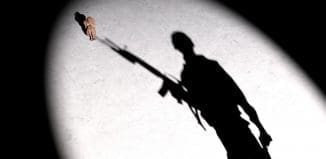Loaded weapons in U.S. airports
This post is also available in:  עברית (Hebrew)
עברית (Hebrew)

Passengers in the U.S are trying to fly well armed.
In 2014, the Transportation Security Administration (TSA) said it seized 2,212 firearms in carry-on bags at airport security checkpoints across the country – and about 83 percent of them were loaded.
The TSA said in a recent blog post that the total number of firearms seized represented a 22-percent increase from the prior year. Firearms were intercepted at 224 airports in 2014, 19 more than in 2013.
According to Fierce HomeLand Security, the agency provided a rundown of seizures that officers made last year of prohibited items and those that appeared dangerous. The agency said it screened more than 653 million passengers – or about 1.8 million per day – last year, which was an increase of 14.8 million from 2013.
The agency provided several examples about the firearms seized last year such as:
- A disassembled .22 caliber gun found in a bag at John F. Kennedy International Airport with some components hidden inside a PlayStation 2 console.
Register to iHLS Israel Homeland Security
- A loaded folding-stock rifle with two loaded magazines found in a bag at Dallas/Fort Worth International Airport.
- A 94-year-old man who tried to enter a checkpoint at LaGuardia Airport with a loaded .38 caliber revolver clipped to his belt.
TSA said it also found other dangerous items such as an Mk 2 hand grenade in a bag at Los Angeles International Airport, resulting in the closure of the terminal checkpoint as an explosive ordnance disposal team took the grenade offsite. Additionally, security officers found a fireworks making kit, fireworks, black powder pellets, more than 700 stun guns and live smoke grenades, among other prohibited items.
Other items such as blocks of inert C-4 explosives, a novelty alarm clock resembling an explosive device and an improvised explosives device training kit were also discovered. These so-called inert items look realistic, the agency said.
“The problem with these types of items is that we don’t know if they are real, toys or replicas until TSA explosives experts are called upon. Inert items can lead to disruption, closed terminals and checkpoints, which often result in canceled or delayed flights,” according to the blog post.





























